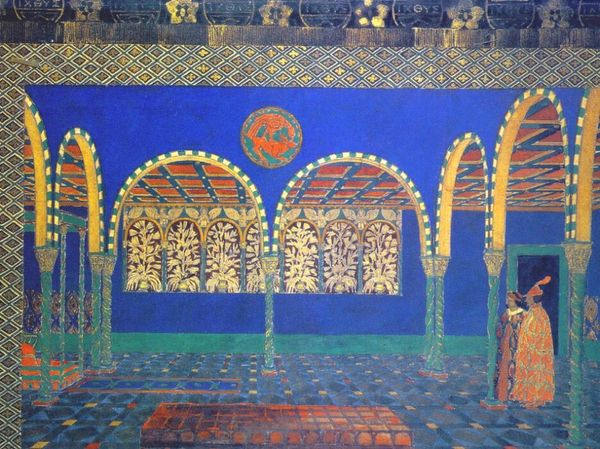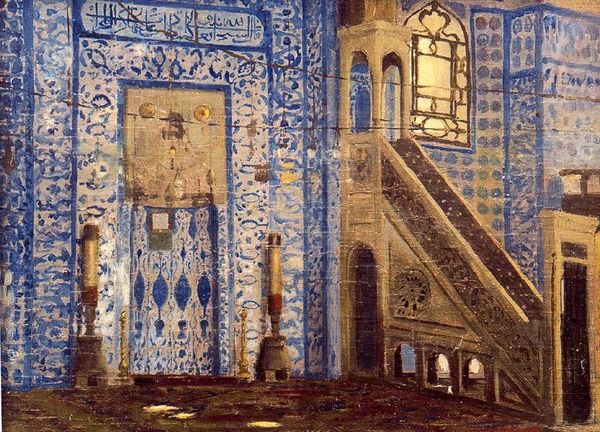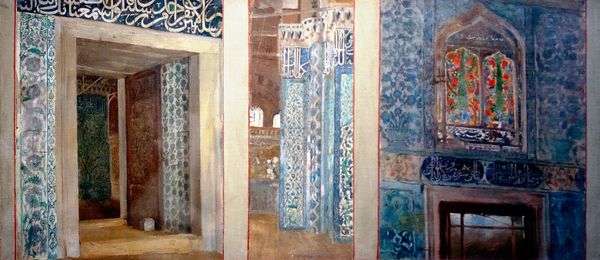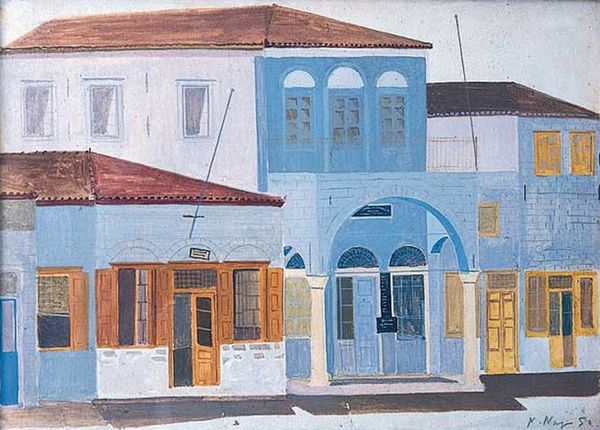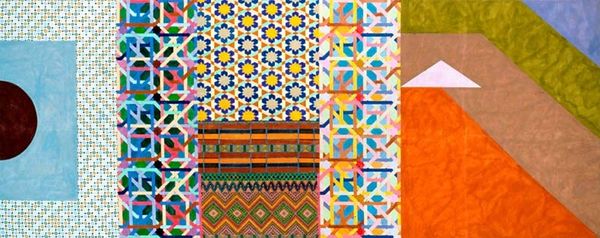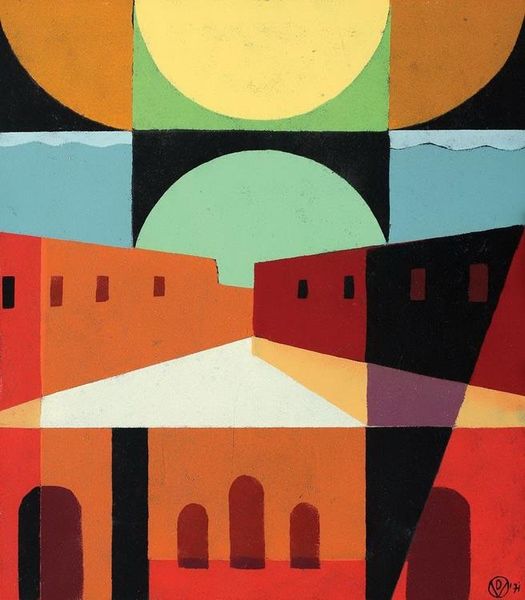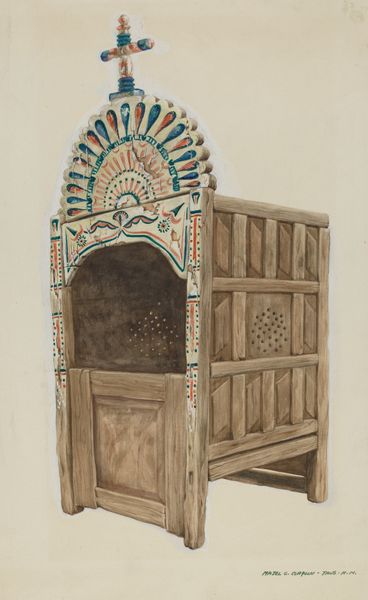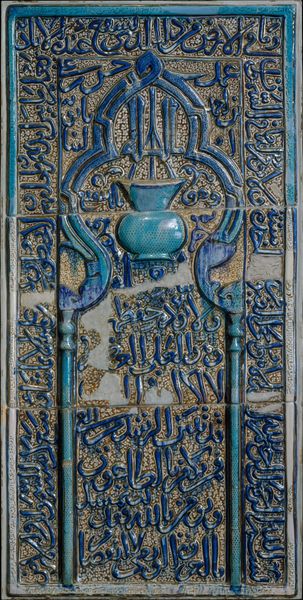
painting, acrylic-paint
#
pattern-and-decoration
#
painting
#
acrylic-paint
#
geometric
#
painting art
#
islamic-art
#
decorative-art
Copyright: Joyce Kozloff,Fair Use
Curator: Joyce Kozloff's "Matisse at the Green Mosque, Bursa" from 1985 offers a captivating blend of styles and influences. It's executed with acrylic paint. Editor: My initial reaction is a sense of serenity punctuated by these vibrant geometric details. The tile work is mesmerizing, offering a tactile depth. I want to know more about that repetition of shape! Curator: The work reflects Kozloff's ongoing engagement with pattern and decoration, a direct response to the perceived marginalization of these elements in Western art history. She’s situating it within the broader political context of the time, especially feminist critiques of power structures. The very title suggests a conversation with Matisse’s orientalism. Editor: That layering of artistic references makes the piece dense. Let’s talk about the tiles; that honeycomb pattern. It appears painstakingly rendered. I'd argue that this detail isn’t mere decoration; it's a material presence which transforms the whole space into the art piece, in contrast to modernist ideals of separating art from daily existence. Curator: Precisely. The architectural interior allows her to address complex themes, such as the West's fascination with the 'Orient,' filtered through a feminist lens, challenging a patriarchal reading of art and culture. How do you see the architectural materials contributing to a dialog with the Western gaze? Editor: The meticulous nature of craft and production makes us think about skill. The tiles create visual interest as repeated elements that reflect and refract light. Their texture invites the touch; what processes of labor were used? The composition forces us to examine cultural and aesthetic exchange through materials, perhaps even confronting neo-colonial ideas. Curator: Absolutely, we cannot ignore those undercurrents of intercultural power dynamics inherent in the Western artist’s depiction of non-Western motifs. Kozloff turns it around and examines how these forms signify within various contexts, inviting us to question historical narratives. Editor: What’s important for me is the sheer labour and consideration, using Islamic patterns in non-traditional paintings, transforming domestic spaces. This allows a deconstruction of artistic and cultural values, and forces a broader dialogue across art history. Curator: This piece invites us to look beyond simple aesthetics, urging a deep understanding of cultural narratives. Editor: And beyond narratives to consider tangible processes of craft! Thank you.
Comments
No comments
Be the first to comment and join the conversation on the ultimate creative platform.

